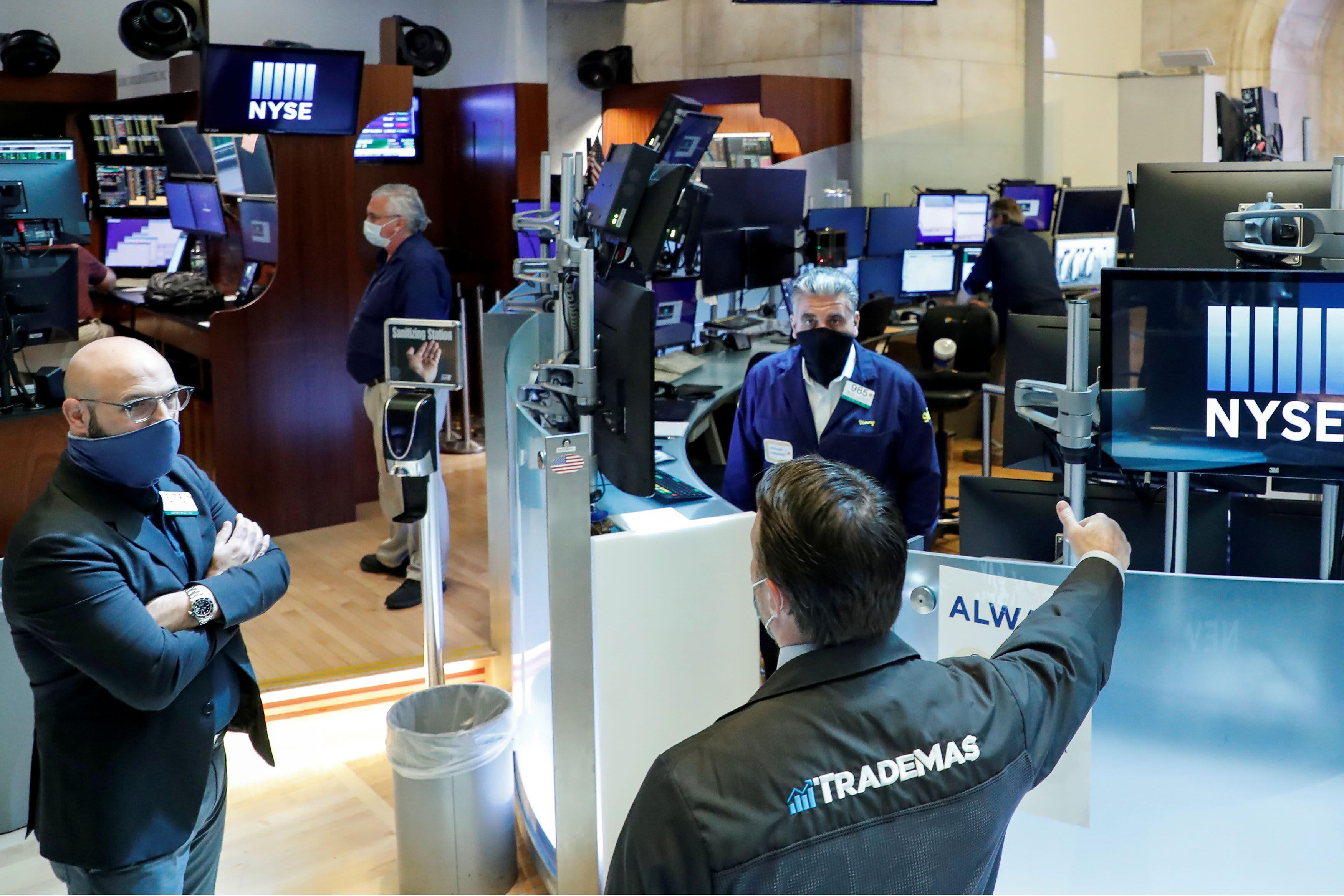Traders wearing masks work, on the first day of in person trading since the closure during the outbreak of the coronavirus disease (COVID-19) on the floor at the New York Stock Exchange (NYSE) in New York, U.S., May 26, 2020.
Brendan McDermid | Reuters
It finally happened, but not without some drama.
The S&P 500 pushed through to an historic intraday high shortly after the open, passing the old February 19th high of 3393.52.
It took several tries. My old friend Sam Stovall at CFRA Research likes to say that new all-time highs are likely rusty doors, they require several attempts before they finally swing open.
The rally to a new historic high on the S&P is one for the record books, on many levels:
- Assuming we also close at a new high, it will have taken less than five months to get back to new highs from the March 23rd low, making it the third-fastest rally to recoup all that it lost, behind the 1982 (which took three months) and 1990 rallies (four months), according to Stovall.
- Friday marked 100 trading days since that March 23rd low. This was the largest 100-day rally ever for the S&P 500 Index, up more than 50%, according to Steve Starker at BTIG.
- Even the bear market records are being broken. Remember that big drop in the S&P from its February 19th high to the March 23rd low, a drop of 34%? It was the shortest bear market since 1929, lasting just 33 calendar days.
Still, the rally has been very uneven. The bulk of the heavy lifting has been done by technology, but in particular by the five big megacap tech names:
Leading the Rally (since Feb. 19)
- Tech: up 12%
- Consumer Discretionary: up 10%
- Comm. Services: up 4%
- Health Care: up 3%
Mega-Cap Momentum (since Feb. 19)
- Amazon: up 46%
- Apple: up 42%
- Netflix: up 25%
- Facebook: up 20%
- Microsoft: up 12%
Despite occasional spurts from cyclical sectors like banks, industrials, and energy, they have remained decided laggards:
Lagging Behind
- Industrials: down 8%
- Banks: down 28%
- Energy: down 31%
For some industries, it is indeed a grim time. Stovall notes that 40% of the 147 sub-industries in the S&P are still down by double-digit percentages.
Nor has the global recovery been even. The U.S. has led and China and South Korea have also regained most of their losses, most of the rest of the world has not. Japan has only recovered roughly 75% of its pre-Covid losses, Brazil a little more than 70%, France and the UK less than 60%.
What’s next?
What’s next for stocks now that we have (improbably) closed at a new record?
Stovall told me that after such a big run, investors should prepare for some modest profit-taking.
”It’s like the messenger from Marathon who crumples from exhaustion after the long run,” he told me by phone.
Of course, that messenger famously died. Stovall doesn’t expect that to happen: “No bull market has ever fallen immediately into a new bear market,” he told me. “They typically fall into a pullback or a correction [a 10% decline]”, noting that the average decline after a new high was 8%.
Stovall, like Goldman Sachs’ David Kostin, also believes the S&P will close the year higher, but with a caveat: “We need upward revisions to third and fourth quarter earnings to justify these valuations,” he told me.
